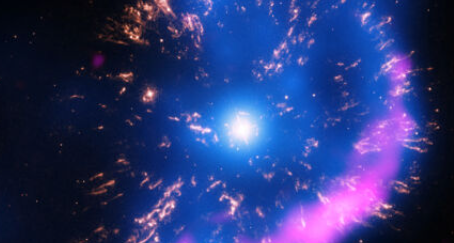It is going to be a sight that no one wants to miss
The night sky is set to dazzle observers with a remarkable celestial event as T Coronae Borealis, a star within the Corona Borealis constellation, prepares for a dramatic nova explosion. This star, part of a binary system featuring a white dwarf and a red giant, is due to illuminate the cosmos significantly due to a process where the white dwarf accretes material from its companion, leading to an explosive release of energy.
Did you know that a once-in-a-lifetime celestial event will appear in our night sky in the coming months?
Scientists are expecting the star T Coronae Borealis to explode sometime in the next few months. It will appear like an extra star that could be even brighter than the North… pic.twitter.com/eSsYEyDO94
— Museum of Science (@museumofscience) June 19, 2024
T Coronae Borealis, also known as T CrB and affectionately termed the ‘Blaze Star,’ is not new to such phenomena; it is known as a recurrent nova, with explosions historically documented approximately every 80 years, the last being in 1946. As the star shows similar activity patterns to those observed before the last explosion, astronomers anticipate another outburst could occur as soon as September 2024.
A nova, which is less intense than a supernova, occurs in a binary system when a white dwarf star accrues enough material from its companion star to trigger a thermonuclear explosion on its surface. This explosion significantly increases the brightness of the star temporarily, making it visible to the naked eye and an exciting subject for scientific study.
Get ready to witness a spectacular nova explosion that will be visible to the naked eye, anticipated to occur imminently! #NovaExplosion #Astronomy #Stargazing 🌌https://t.co/wlP1OBxxX5
— Jesse Ben Israel (@jessebenisrael) May 21, 2024
The upcoming nova event is not just a spectacle for stargazers but a critical opportunity for astronomers. Organizations worldwide, including NASA, are preparing to observe the event across multiple wavelengths using ground-based telescopes and space observatories like the James Webb Space Telescope and the Fermi Gamma-ray Space Telescope. These observations aim to gather data on the nova’s behavior, structure, and energy, contributing valuable insights into the dynamics of binary star systems and the processes of accretion and explosion.
T Coronae Borealis “Meets” asteroid Pallas: online observation – 24 June 2024https://t.co/znZShkBCpd
— Exitiale Vitium (@ExitialeVitium) June 19, 2024
For those eager to witness this stellar event, the explosion will make T CrB visible in the Northern Crown constellation, located by drawing a line between the bright stars Arcturus and Vega. This nova provides a unique chance for both professional astronomers and amateur stargazers to witness and study a rare celestial phenomenon that illuminates the intricate and dynamic life cycles of stars.
key Points:
i. Celestial Event: T Coronae Borealis, located in the constellation Corona Borealis, is expected to undergo a dramatic nova explosion by September 2024, presenting a rare celestial spectacle.
ii. Binary System Dynamics: This star is part of a binary system consisting of a white dwarf and a red giant. The white dwarf accrues material from the red giant, leading to periodic explosive increases in brightness known as novae.
iii. Recurrent Nova: Known as a recurrent nova, T Coronae Borealis has historically erupted approximately every 80 years, with the last recorded explosion occurring in 1946.
iv. Scientific Opportunity: The upcoming nova explosion offers a valuable opportunity for scientific observation. Astronomers plan to use telescopes and space observatories to study the event, aiming to gather insights into the mechanisms of stellar explosions and binary star interactions.
v. Viewing Guidance: For observers wishing to witness this event, T Coronae Borealis will become significantly brighter and visible to the naked eye. It can be located in the sky by drawing an imaginary line between the bright stars Arcturus and Vega, within the Northern Crown constellation.
James Kravitz – Reprinted with permission of Whatfinger News



